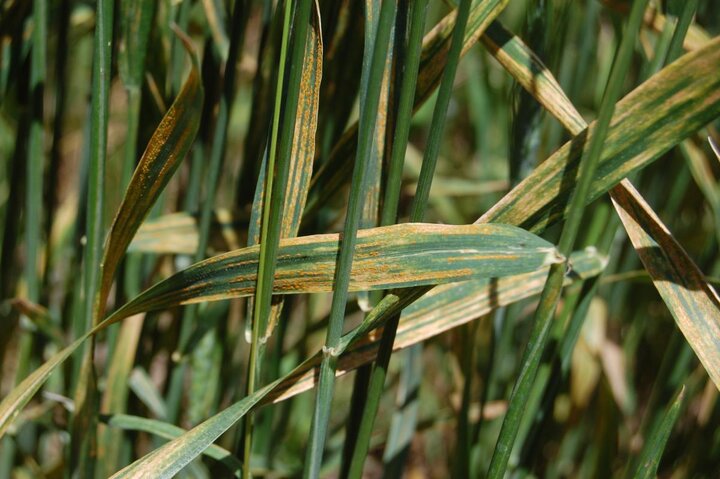
Reports of stripe rust in wheat, caused by Puccinia striiformis f. sp. tritici, have continued throughout the Panhandle, particularly in Kimball and Banner counties. With additional sightings from central and southwest Nebraska (see Stripe, Stem, and Leaf Rust in Fall-Planted Wheat), disease appears to be widespread statewide this fall.
This is the second successive year that stripe rust has been found on fall-planted wheat in the Panhandle. It was identified from several locations in Banner County in October 2015 and was extremely damaging to wheat production in 2016. Current reports would suggest the need to be attentive to this same possibility in 2017.
At this point I am uncomfortable recommending fungicide applications this fall. We are currently collaborating with crop consultants and wheat producers to conduct simple small-scale experiments to obtain preliminary data on the feasibility or importance of fall fungicide applications for future reference. This research is occurring in multiple sites throughout the Panhandle in both commercial wheat fields and UNL research plots.
Furthermore, we are planning new stripe rust studies in 2017 to establish a predictive model for optimizing disease management decisions for growers. These studies will be conducted at several sites throughout the Panhandle and with additional collaborative sites in North Dakota utilizing both resistant and susceptible cultivars at each site. The concept is to estimate the risk of disease development and make fungicide applications based on the new model.
Lastly, we have also received numerous reports of rust occurring in homeowner lawns in the Scottsbluff-Gering areas. This is very unusual and these infections could easily serve as a reservoir for pathogen survival over the winter, potentially resulting in early infections of wheat crops next spring. If you observe or suspect rust infections in any type of grass around your properties (lawns or weeds), please contact me (rharveson2@unl.edu; 631-5953) or bring a sample to the Panhandle Research and Extension Center for analysis.
